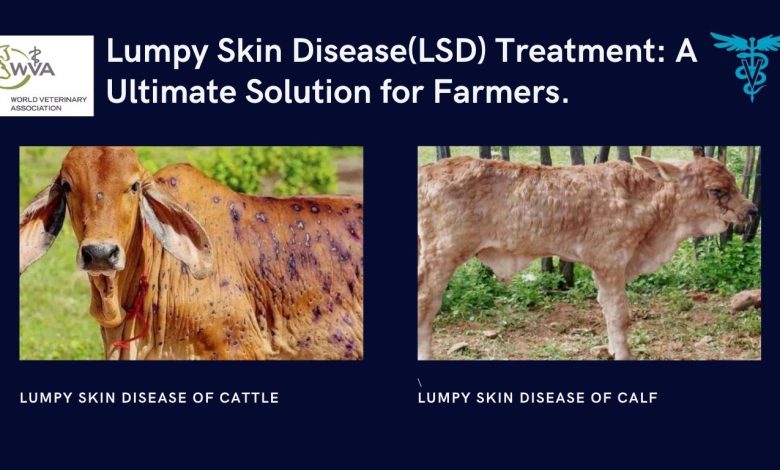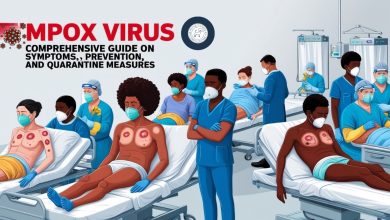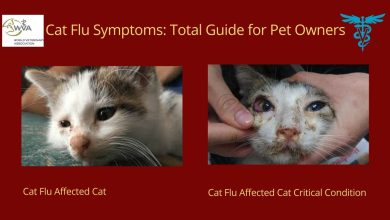Lumpy Skin Disease Treatment: A Ultimate Solution for Farmers

Lumpy Skin Disease (LSD) is a viral infection that primarily affects cattle, causing significant economic losses in the livestock industry. As Bangladeshi farmers strive to protect their herds, understanding Lumpy skin disease’s history, types, spread, impact on humans, diagnosis, preventive methods, and treatment options is crucial. This article aims to provide an in-depth overview to help farmers manage and effective Lumpy Skin Disease Treatment.
Table of Contents
History of Lumpy Skin Disease
Lumpy Skin Disease was discover in Zambia in 1929 for the first time. The disease rapidly spread across Africa, the Middle East, and Asia. In recent years, LUMPY SKIN DISEASE has become a significant concern in South Asia, including Bangladesh, due to its potential to devastate cattle populations.
Types of LUMPY SKIN DISEASE
LUMPY SKIN DISEASE primarily affects cattle, but it can manifest in two main forms:
1. Acute Form: This form characterizes the sudden onset of fever, nodules on the skin, and enlarged lymph nodes. It can lead to severe symptoms and high mortality rates.
2. Chronic Form: This form presents milder symptoms, such as occasional nodules and general weakness, but can persist for a longer duration.
Spread of LUMPY SKIN DISEASE
LUMPY SKIN DISEASE is primarily spread through insect vectors such as mosquitoes, flies, and ticks. The virus can transmit through direct contact with infected animals, contaminated feed, water, and equipment. Movement of infected animals further contributes to the spread of the disease.
Impact on Humans
While LUMPY SKIN DISEASE does not pose a direct threat to human health, its economic impact on the livestock industry is profound. The loss of cattle due to LUMPY SKIN DISEASE can lead to reduced milk and meat production, affecting food security and livelihoods of farmers.
Diagnosis of LUMPY SKIN DISEASE
Diagnosing LUMPY SKIN DISEASE involves clinical observation and laboratory testing. Key diagnostic methods include:
– Clinical Signs: Fever, skin nodules, enlarged lymph nodes, and reduced milk production.
– Laboratory Tests: Polymerase Chain Reaction (PCR) and virus isolation are commonly used to confirm LUMPY SKIN DISEASE.
Preventive Methods
Lumpy Skin Disease Treatment involves a combination of management practices and vaccination:
1. Vaccination: The most effective way to LUMPY SKIN DISEASE treatment is through vaccination. Vaccines such as the Neethling strain are widely used. website: Visit Now
2. Insect Control: Implementing measures to control insect vectors, such as using insecticides and maintaining clean farm environments, can reduce the risk of transmission.
3. Quarantine and Movement Control: Restricting the movement of animals from infected areas can help contain the spread of the disease.
Free Veterinary Hospital: Click Now
Medicine Group Names for Different Ages
LUMPY SKIN DISEASE teatment focuses on managing symptoms and preventing secondary infections. Antibiotics, anti-inflammatory drugs, and supportive care are commonly used. Here are some recommended treatments based on age groups:
– Calves (0-6 months): Amoxicillin, Oxytetracycline
– Young Cattle (6-24 months): Doxycycline, Flunixin meglumine
– Adult Cattle (2 years and above): Enrofloxacin, Meloxicam
Cost for Complete Recovery of LUMPY SKIN DISEASE treatment
The cost LUMPY SKIN DISEASE treatment can vary significantly based on the severity of the infection and the management practices employed. On average, the cost for complete recovery per animal can range from $50 to $200, including medication, supportive care, and preventive measures.
2.5k US$ Scholarship: Apply Now
Advice for Bangladeshi Farmers
For Bangladeshi farmers,LUMPY SKIN DISEASE treatment requires a proactive approach:
1. Regular Vaccination: Ensure your cattle are vaccinated against LUMPY SKIN DISEASE to provide immunity.
2. Maintain Farm Hygiene: Keep the farm environment clean and free from insect breeding sites.
3. Monitor and Report: Regularly monitor your cattle for symptoms of LUMPY SKIN DISEASE and report any suspected cases to veterinary authorities immediately.
4. Implement Biosecurity Measures: Restrict the movement of animals and implement quarantine protocols for new or sick animals.
5. Seek Veterinary Assistance: Consult with a veterinarian for proper diagnosis and treatment plans tailored to your herd’s needs.
Best Cat food: Click Here
Conclusion
Lumpy Skin Disease is a serious threat to the cattle industry, but with proper knowledge and preventive measures, its impact can be minimized. Bangladeshi farmers play a crucial role in controlling the spread of LUMPY SKIN DISEASE by adopting best practices in vaccination, farm management, and biosecurity. Stay informed and vigilant to protect your livestock and ensure a sustainable future for your farm. For more detailed information on cattle diseases and management practices, visit our [disease management section]. Stay updated with the latest veterinary news and tips at [PetVetGuides.com].




One Comment